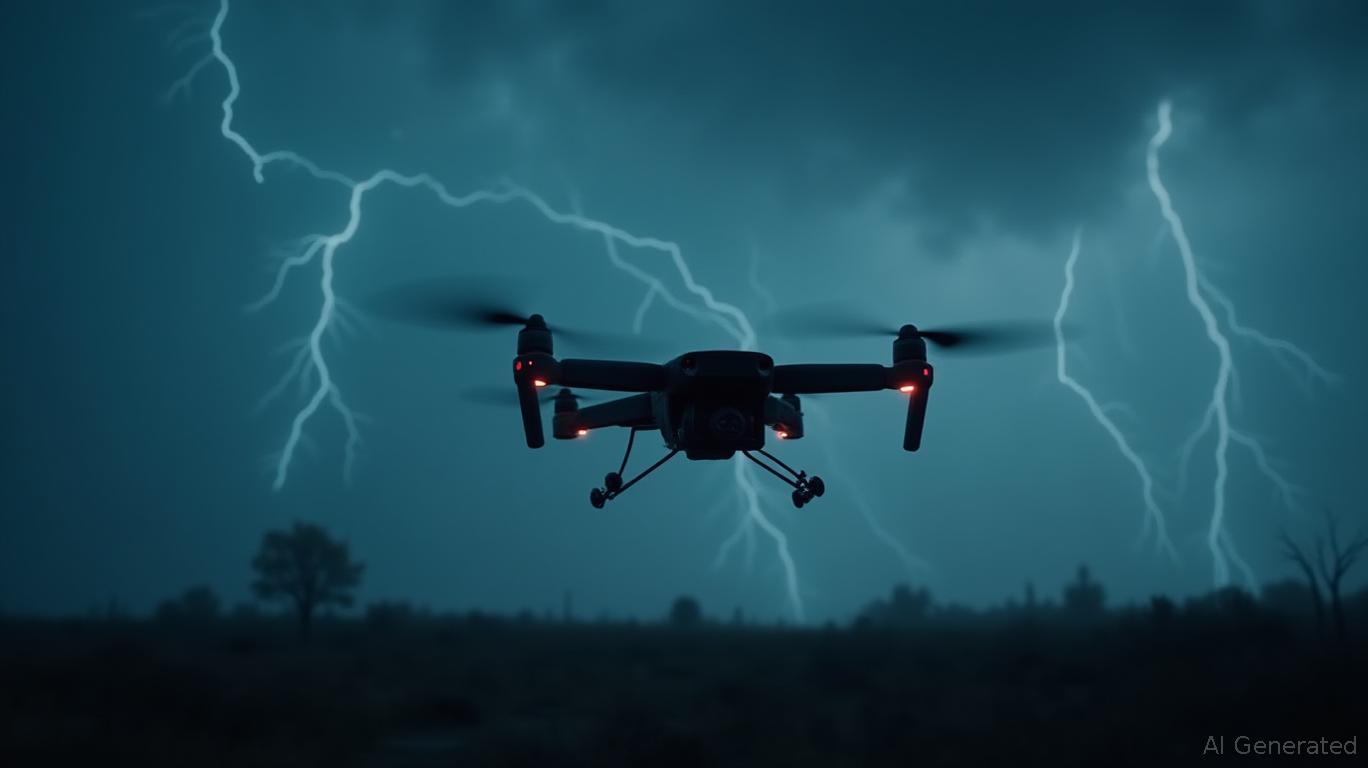Red Cat Holdings: Navigating Volatility to Secure Drone Dominance
Red Cat Holdings (NASDAQ: RCAT) stands at a pivotal juncture in its evolution, balancing near-term financial turbulence with the potential to cement its position as a leader in the rapidly growing tactical drone market. As the company scales production, integrates advanced technologies, and navigates liquidity challenges, investors must weigh short-term volatility against the strategic advantages that could redefine its trajectory. Here's why Red Cat's long-term prospects warrant a disciplined, hold-oriented approach.
Operational Momentum: Factory Scaling and Palantir's Tech Edge
The Long Beach factory, a cornerstone of Red Cat's production strategy, has delivered critical milestones in 2025. By June, the facility had begun fulfilling its $10 million non-SRR backlog for Black Widow and Edge 130 drones, with monthly production targeted to reach 150 units by year-end. This ramp-up is foundational to meeting demand from the U.S. Army's Short Range Reconnaissance (SRR) program, which has already secured Red Cat as its Program of Record. Scaling further, the company aims to expand capacity to over 600 drones per month through a new California facility, leveraging a $30 million capital raise to bolster liquidity.

Equally transformative is Red Cat's partnership with Palantir Technologies. The integration of Palantir's VNav software—enabling GPS-independent navigation via AI and satellite imagery—positions the Black Widow as a critical tool for modern warfare. This technology neutralizes inertial drift and enhances operability in electronic warfare environments, directly addressing Pentagon priorities. Meanwhile, Palantir's Warp Speed manufacturing OS is streamlining supply chains and quality control, with the potential to lift gross margins to 50% at scale, up from a year-to-date negative 12%.
Liquidity Risks and Market Volatility
Red Cat's near-term challenges are stark. Year-to-date revenue fell 24% to $4.3 million due to the strategic pivot away from lower-margin Teal 2 drones, and the interim CFO's resignation underscores leadership transition risks. The stock's price volatility—driven by retail speculation and macroeconomic uncertainty—has been amplified by its microcap status.
Investors must also acknowledge the company's reliance on external financing. While $6 million in post-quarter funding has improved liquidity to $5.7 million, sustained growth hinges on executing its capital plan without over-leveraging. The risk of delayed SRR contract finalization or export license hurdles further complicates near-term predictability.
Why a Long-Term Hold Remains Compelling
The defense and commercial drone markets offer a tailwind. Global spending on tactical drones is projected to grow at a 9.5% CAGR through 2030, fueled by military modernization and commercial applications like surveillance and logistics. Red Cat's Black Widow, with its VNav-enabled versatility, is uniquely positioned to capitalize on this demand.
Crucially, Red Cat's strategic moves are creating high-margin opportunities. The software revenue stream from Palantir's tech adds recurring income potential, while the $80–$120 million 2025 revenue guidance—bolstered by the SRR program's $14.7 million in customer quotes—hints at an inflection point. The acquisition of FlightWave Aerospace and the TACFI contract with the U.S. Air Force further diversify revenue channels, reducing reliance on any single customer.
Investment Thesis: A Volatility-Adjusted Opportunity
Red Cat is not a “set it and forget it” investment. Near-term risks—including margin pressures, leadership transitions, and execution delays—demand caution. However, the company's GPS-independent tech, military contract wins, and strategic manufacturing scale-up align with long-term trends in defense innovation and supply chain resilience.
For investors with a 3–5 year horizon, Red Cat presents an asymmetric opportunity. The stock's current valuation—pegged to its aggressive growth targets—could reward patience if production scales as planned. Key catalysts include finalizing the TD3/LRIP contract, achieving 50% margins by 2026, and securing international orders as Chinese drone bans expand.
Recommendation: Hold for investors willing to tolerate volatility, with a focus on the company's ability to execute its operational and technological roadmap. Short-term traders should tread carefully, but strategic investors may find value in a disciplined averaging-down approach.
In the drone arms race, Red Cat's blend of military-grade innovation and production scalability positions it as a contender for market leadership—if it can weather the storm of today's uncertainties.

Comments
No comments yet